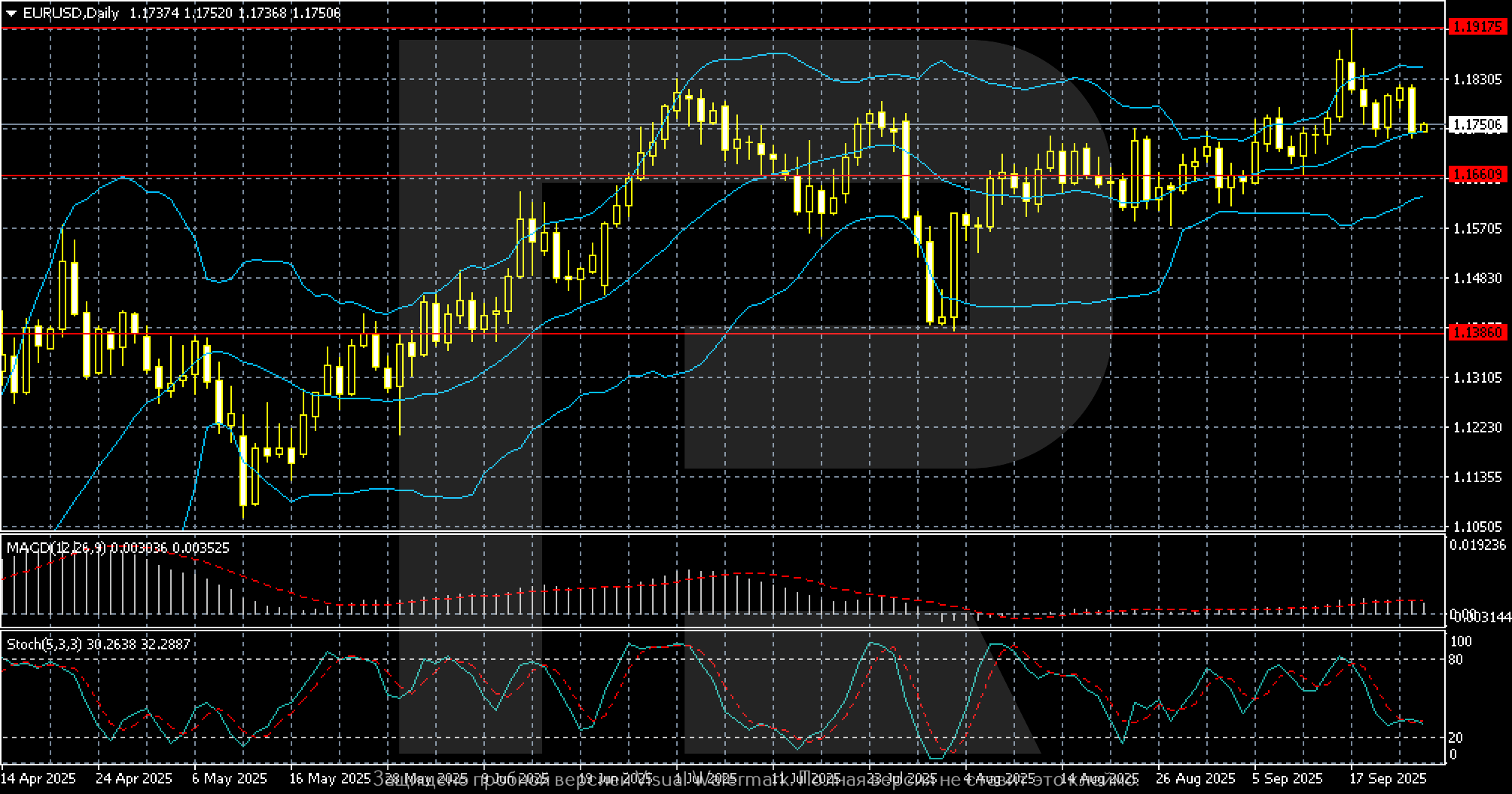EURUSD weekly forecast: further growth requires a stronger case
Expectations of further Fed policy easing following the September rate cut remain the key driver for the currency market. The likelihood of new steps is already partially priced in, but uncertainty persists amid inflationary pressures in the US and stable demand for the dollar as a safe-haven asset.
The EURUSD rate reflects the balance of signals from the Fed and the ECB, as well as investors’ reaction to fresh macroeconomic data on both sides of the Atlantic. This review explores potential scenarios for the EURUSD pair in late September and early October.
EURUSD forecast for this week: quick overview
- Market focus: the Fed cut rates by 25 basis points, leaving open the possibility of two more moves by the end of the year. Inflation remains above target, and the labour market gives mixed signals. The euro receives moderate support, but dollar demand strengthens amid uncertainty and the risk of a US government shutdown
- Current trend: the EURUSD rate is hovering around 1.175The pair held steady after a correction, but growth remains limited due to persistent dollar strength and cautious Fed commentary
- Outlook for 29 September – 3 October: the baseline scenario suggests consolidation in the 1.1650–1.1830 range. An upward breakout targets 1.1915, while consolidation below 1.1650 would increase pressure and could drive the pair to 1.1570–1.1500
EURUSD fundamental analysis
Last week, the EURUSD pair was under the influence of US dollar volatility and ongoing uncertainty surrounding Fed policy.
Traders are pricing in around 43 basis points of easing by the end of the year, but recent Fed commentary has reduced confidence in another cut in the near term. Jerome Powell and other Fed officials stressed that much depends on new labour and inflation data.
US economic statistics have been mixed. New home sales surged 20.5% in August, the strongest monthly growth since 2022. Mortgage demand hit a three-year high, according to CNBC, amid lower rates. At the same time, the Richmond Fed manufacturing index fell to -17 in September, reflecting sector weakness. The S&P composite PMI declined to 53.6 from 54.6, indicating some growth slowdown.
The euro faces additional pressure from weak fundamentals in the eurozone, leaving EURUSD dynamics largely tied to dollar movement.
Going forward, EURUSD’s path will heavily depend on upcoming labour market and inflation figures.
EURUSD technical analysis
On the daily chart, the EURUSD pair went through several stages from April to September 2025. In spring, the pair declined and hit a low near 1.1390. During the summer, momentum shifted, with the euro consolidating above 1.1660 and climbing to a high near 1.1917.
In August and September, movement entered a consolidation phase. The pair fluctuated within the 1.1660–1.1917 range and ended the period near 1.1750. Indicators reflect reduced volatility and lack of a clear trend: MACD is moving near the zero line, and the Stochastic is close to oversold territory, both suggesting the possibility of a technical rebound.
Overall, after the summer rally, the EURUSD pair entered a sideways channel. To continue its upward trajectory, the pair must consolidate above 1.1917, while a drop below 1.1660 would increase selling pressure.
EURUSD trading scenarios
Market sentiment for the EURUSD pair for the coming week remains neutral and cautious.
The technical picture remains moderately positive: the pair is hovering around 1.1750 and above, supporting potential movement towards 1.1830–1.1915. However, fundamentals limit the upside. The Federal Reserve only cut rates by 25 basis points and signalled caution in further easing, while inflation remains above target. Additional pressure comes from demand for the dollar as a safe-haven asset amid shutdown risks and US labour market weakness.
- Buy scenario (long):
Long positions are appropriate if the price holds above 1.1750. Confirmation would come from consolidation above this level and dovish signals from the Fed. Targets are 1.1830 and 1.1915.
Stop-loss is below 1.1660.
- Sell scenario (short):
Short positions are considered if the price breaks below 1.1660, especially in the event of strong US macroeconomic data and increased demand for the dollar. The nearest targets are 1.1573 and 1.1500.
Stop-loss is above 1.1830.
Summary
Overall sentiment on EURUSD remains cautiously positive for the euro after the Federal Reserve's 25-basis-point rate cut. Markets are pricing in the possibility of two more moves by the end of 2025 and one in 2026. US inflation remains above target, while the labour market shows signs of weakening, raising expectations for further easing.
Meanwhile, the dollar retains support as a safe-haven asset amid tariff risks, the threat of a government shutdown, and global uncertainty. The balance of factors remains mixed: technically, the euro has room to rise to 1.1830–1.1915, but fundamentals cap momentum. In the absence of new USD catalysts, the pair may hold above current levels and test resistance zones.

